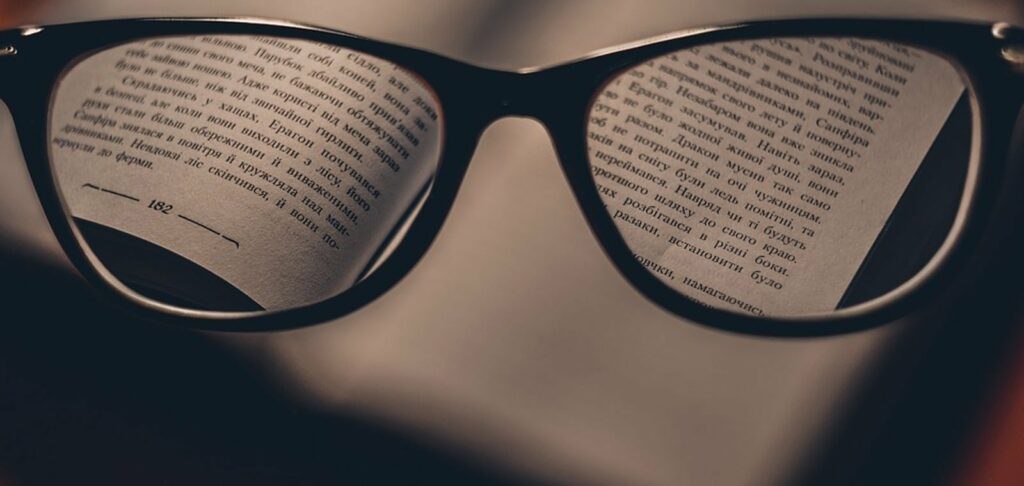
Style or diagnosis?
In past centuries, long before the advent of digital cameras, the quality of artists’ vision was demanding. A painter had to see perfectly in order to accurately render the finest details of portraits and landscapes on canvas. But times were changing, the ultimate precision in painting was replaced by the era of Impressionism, which allowed the blurring of forms, the play of imagination, grotesqueness, the transfer of mood rather than the essence of objects.
However, some art critics of the XIX century considered the new wave in painting solely in the light of defects of vision of its creators and grouch about the arrival in the art of blind artists. Perhaps there was some truth in their words. It is known that many nearsighted masters refused to correct their defect. Neither Cézanne nor Renoir, who were nearsighted, ever wore glasses. And the latter had a habit of stepping away from a painting to judge the impression of blurred forms.
Australian neurosurgeon Noel Dan concluded in his study that the works of famous impressionists Monet, Renoir, Degas, Cézanne, Pissarro, Matisse and Rodin are united by the perception of the world in the light of their own myopia. It is problems with vision that the researcher explains the tendency of the Impressionists to certain colors, such as red, to softness of lines, lack of detail, shivering shades. The neurosurgeon’s bold statement was immediately booed by art connoisseurs. And yet, there is undoubtedly a certain connection between the works of some artists and the peculiarities of their vision.
Claude Monet’s color hallucinations
The famous French impressionist Claude Monet was diagnosed with bilateral cataracts at the age of 71.
– With cataract, the crystal clear lens gradually becomes cloudy, vision deteriorates, as if the eyes are covered with cellophane film or fogged glass,” explains Andrei Sergienko, Professor, founder of the medical center “Professor Sergienko’s Ophthalmology Clinic”. – Over time, a person loses the ability to see cold colors. In Monet’s paintings, you can trace how his disease progressed – blue, blue colors on his canvases are gradually replaced by yellow and brown. This is the palette in which the cataract patient sees the world.
The development of Monet’s diagnosis is visually demonstrated by two of his paintings, The Japanese Bridge at Giverny Gardens. The difference between the writing of both paintings is approximately 20 years. The same landscape has been changed beyond recognition by cataracts during this period. In 1899, the picture is drawn every detail, twenty years later it looks yellow and blurred. “I no longer see with the same brightness of color,” Claude Monet lamented in his diary. – Red looks dirty, pink looks dull”. But Monet did not give up his illness: “I will paint even blind, like Beethoven, who composed music, being completely deaf”. Unable to distinguish details, the artist increased the format of canvases. In choosing paints, he relied solely on their names, which he read on the labels and then memorized the exact location of the tubes on the palette. The master realized that his paintings were too dark, because the progressing cataract made it impossible to distinguish blue from black, so he simply destroyed many of his paintings.
In 1923, after unsuccessful surgery on his left eye, Claude Monet developed a secondary cataract. To improve vision at least for a few hours, he took special drugs that dilate the pupils. At that time, the artist complained that the right eye, affected by the disease, sees everything in yellow colors, while the operated left eye perceives the world in rich blue. He painted his paintings this way, covering one or the other eye. In the last paintings of the artist, the form disappears altogether. Monet approaches the limits of abstraction: “The subject is secondary to me. What I want to reproduce is the relationship between me and the subject.”
Vincent van Gogh’s Yellow Note
Another artist known for his morbid fondness for the color yellow is Vincent van Gogh. In his “night and evening” paintings, the stars and the month are depicted in golden halos, daytime landscapes are permeated with sunlight, yellow curls of trees and red sunflower heads are bathed in it. Even in the paintings, the subject of which is limited by the space of the room, the warm light of the lamps prevails.
The artist’s passion for this color closely engaged in the scientist of the University of California Paul Wolf and made a sensational statement: the holiday of yellow in the paintings of Van Gogh is associated with his illness. More precisely – with the drugs with which he was treated.
In the second half of his life, the great Van Gogh suffered from insomnia, dizziness and epileptic seizures. After the seizures, he experienced terrible weakness and aching pains behind the sternum. A close friend and attending physician of the artist, Dr. Paul Ferdinand Gachet, in a good impulse to alleviate the suffering of his comrade gave him generous doses of digitalis, which is based on the herb foxglove. This poisonous medicinal plant has long been called a herb-color deception. In the middle of the XX century, scientists proved that an overdose of digitalis causes color anomalies: the yellow color in the perception of the world acquires a surprising emotional power. Paul Wolf concluded that Van Gogh’s longstanding friendship with foxglove made him a patient of xanthopsia, a disease in which the world around him is seen predominantly in yellow tones.
However, there is another version of the origins of Van Gogh’s “yellow moods”. In addition to paints and palettes, the artist had another hobby – absinthe. Today it is known that the wormwood alkaloids in this drink triple the perception of yellow color. In a letter to his brother berating him for abusing absinthe, Van Gogh wrote: “I really need it to reach the highest yellow note.”
El Greco’s Crooked Mirrors
The paintings of the famous Spanish artist of the XVI-XVII centuries, El Greco, are difficult to confuse with others. The bizarrely elongated faces, bodies and structures on his canvases are attributed by some to the peculiarities of style, while others (and first of all ophthalmologists) – to astigmatism, i.e. eye disease that distorts the image like crooked mirrors in a laughing room. In addition to astigmatism, El Greco is post facto diagnosed with myopia – up to 10 diopters. It would be funny if things were like that, because among connoisseurs of painting there is another opinion: as if it was El Greco who introduced the fashion for slimness and thinness. “Curly” figures of subtile women from his canvases sharply contrasted with the images of lush beauties of his contemporary Rubens. Did the artist’s talent, mixed with a visual defect, change the tastes of society for centuries?
– People with astigmatism have an altered shape of the cornea and lens,” explains Andrei Sergienko. – Instead of looking like a billiard ball, the lens is elongated. Rays of light traveling through it at different locations travel unequal distances before focusing on the retina. As a result, something will be seen perfectly and something will be distorted. El Greco’s paintings are similar to the vision of surrounding objects by a person with astigmatism. If ophthalmologists of the XVII century had modern knowledge, the situation could have been corrected in 10 minutes by correcting the artist’s vision with special convex-concave lenses. But, fortunately, time runs its course. Because then the world wouldn’t have seen so many brilliant paintings. And not just by El Greco.



